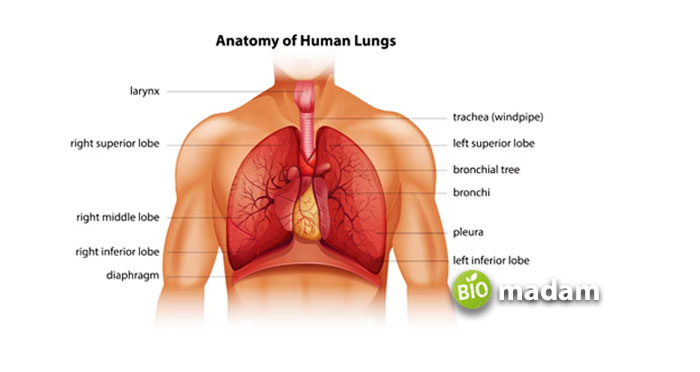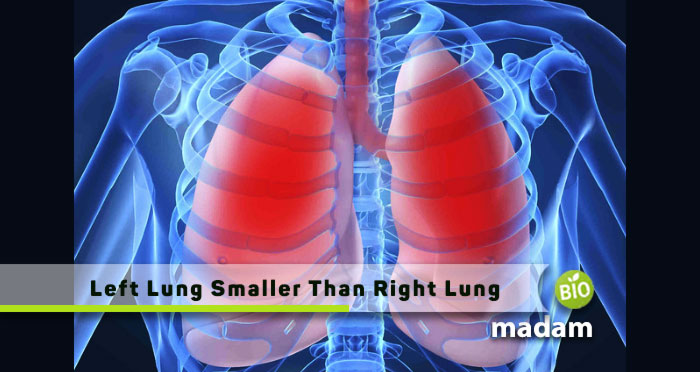Lungs are among the most important organs in the body as they contribute to the critical function of breathing. Lungs allow the exchange of gasses and replenish the oxygen in the red blood cells. The changes in breathing patterns may also indicate underlying health issues for another reason. You might know that the left lung is smaller than the right lung. But do you know why?
Keep reading to know why the left lung is smaller than the right lung.
Location of the Lungs
The right and left lungs are on each side of the breastbone in the chest cavity. They extend from above the clavicle on the front till the sixth rib down. At the same time, the lungs finish at the tenth rib at the back of the chest. Their placement allows making space for the heart and the liver to fit properly.
Left Lung vs Right Lung Size
It is observed that the left lung is smaller than the right lung. The right lung is not only bigger but also weighs more than the left lung.
The left lung is smaller than the right lung as it has a notch or indentation that makes space for the heart.
This notch is known as the cardiac impression that shapes the anterior and inferior parts of the superior lobe into a thin shape called the lingual. Besides the difference in size due to the presence of cardiac impression, the left and right lungs have a few more differences between them.

Left Lung vs Right Lung Length
While the right lung is larger in size or width than the left, it is longer than the latter. The main reason behind this difference in length is the position of the liver just under the right lung. It leads to a shorter right lung due to the placement of the liver to function under the ribcage.
Left Lung vs Right Lung Weight
The right lung is slightly heavier than the left lung because of its size. The right lung weighs around 700 grams, whereas the left lung comes around 650 grams.
Left Lung vs Right Lung Lobes
The left lung has two lobes, while the right lung has three lobes, but the lingual is also often considered in place of the third lobe in the left lung. Two fissures (oblique and horizontal) divide the right lung into three lobes. Meanwhile, the oblique fissure on the left lung gives rise to two lobes. The difference in the number of lobes is also attributed to the size of the lungs due to cardiac impression.

The Bottom Line
The right and left lungs are present on each side of the breast bone and are pink in color as a result of blood supply through arteries. The main difference between the left and right lung is the difference in their size. The left lung is smaller than the right lung because it has a notch called the cardiac impression as a result of the placement of the heart next to the lungs. This leads to a smaller (in width) left lung. It also weighs slightly less than the right lung. However, the left lung is longer than its right counterpart.
FAQs
Which lung is smaller in size and why?
The left lung is less wide than the right lung because of the cardiac impression or notch. The cardiac notch is a space in the left lung. It makes space for the heart. However, the left lung is longer than the right lung as the liver resides just below it.
What is unique to the left lung?
The left and right lungs are quite different from each other in many ways. The left lung is thinner and longer. At the same time, it has two lobes compared to three lobes in the right lung. Left lung has one fissure instead of two fissures in the right lung.
What is the color of the lungs?
Lungs are pink in color due to a vast network of blood vessels that provide oxygen-rich blood to the lung. The healthy pink lungs may change color due to years of smoking nicotine and tobacco, indicating breathing problems and respiratory diseases or disorders.

Anna has completed her degree in Pharmacy from the University of Hawaii. She is serving as a research assistant in a pharmaceutical company. She had a great interest in writing blogs, traveling to different parts of the US, and trying delicious recipes in her spare time.

